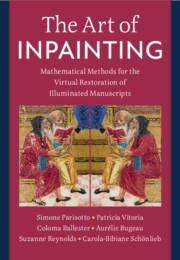Refine search
Actions for selected content:
206 results
1 - Virtues of Restoration
- from Part I - Patrons and Communities
-
- Book:
- Rebuilding Histories in the Roman World
- Published online:
- 23 November 2025
- Print publication:
- 11 December 2025, pp 45-86
-
- Chapter
- Export citation

Rebuilding Histories in the Roman World
- Architectural Restoration and Temporality from Augustus to Justinian
-
- Published online:
- 23 November 2025
- Print publication:
- 11 December 2025
Chapter 4 - Milton and the Protectorate
-
- Book:
- Milton's Strenuous Liberty
- Published online:
- 23 October 2025
- Print publication:
- 06 November 2025, pp 101-125
-
- Chapter
- Export citation
Chapter 7 - The Political Messages of Samson Agonistes
-
- Book:
- Milton's Strenuous Liberty
- Published online:
- 23 October 2025
- Print publication:
- 06 November 2025, pp 179-205
-
- Chapter
- Export citation
Introduction
-
- Book:
- Milton's Strenuous Liberty
- Published online:
- 23 October 2025
- Print publication:
- 06 November 2025, pp 1-33
-
- Chapter
- Export citation
Chapter 3 - How Milton Defined Heresy and Why
-
- Book:
- Milton's Strenuous Liberty
- Published online:
- 23 October 2025
- Print publication:
- 06 November 2025, pp 86-100
-
- Chapter
- Export citation
Biological soil crusts in the Arabian Peninsula: Ecological functions, current knowledge and research gaps
-
- Journal:
- Cambridge Prisms: Drylands / Volume 2 / 2025
- Published online by Cambridge University Press:
- 03 November 2025, e13
-
- Article
-
- You have access
- Open access
- HTML
- Export citation
Epilogue - Democracy Unrestorable
-
- Book:
- Moral Autopsy
- Published online:
- 18 November 2025
- Print publication:
- 30 October 2025, pp 265-274
-
- Chapter
- Export citation
2 - What Is a Counterrevolution?
-
- Book:
- Return of Tyranny
- Published online:
- 17 September 2025
- Print publication:
- 23 October 2025, pp 18-43
-
- Chapter
- Export citation
6 - Regulatory Intervention
-
- Book:
- Regulating a Thousand Cuts
- Published online:
- 27 September 2025
- Print publication:
- 09 October 2025, pp 130-176
-
- Chapter
-
- You have access
- Open access
- HTML
- Export citation
4 - Conceptualization
-
- Book:
- Regulating a Thousand Cuts
- Published online:
- 27 September 2025
- Print publication:
- 09 October 2025, pp 74-101
-
- Chapter
-
- You have access
- Open access
- HTML
- Export citation
11 - Design for Regulating a Thousand Cuts
-
- Book:
- Regulating a Thousand Cuts
- Published online:
- 27 September 2025
- Print publication:
- 09 October 2025, pp 310-330
-
- Chapter
-
- You have access
- Open access
- HTML
- Export citation
Reforesting Upper Mississippi River floodplain openings colonized by invasive species
-
- Journal:
- Invasive Plant Science and Management / Accepted manuscript
- Published online by Cambridge University Press:
- 05 September 2025, pp. 1-36
-
- Article
-
- You have access
- Open access
- Export citation
Coastal roots: the history of seagrass in Northern Ireland
-
- Journal:
- Journal of the Marine Biological Association of the United Kingdom / Volume 105 / 2025
- Published online by Cambridge University Press:
- 23 June 2025, e63
-
- Article
-
- You have access
- Open access
- HTML
- Export citation

The Art of Inpainting
- Mathematical Methods for the Virtual Restoration of Illuminated Manuscripts
-
- Published online:
- 22 May 2025
- Print publication:
- 22 May 2025
2 - Local Inpainting Methods
-
- Book:
- The Art of Inpainting
- Published online:
- 22 May 2025
- Print publication:
- 22 May 2025, pp 13-51
-
- Chapter
- Export citation
4 - Deep Learning Inpainting Methods
-
- Book:
- The Art of Inpainting
- Published online:
- 22 May 2025
- Print publication:
- 22 May 2025, pp 115-161
-
- Chapter
- Export citation
3 - Non-Local Inpainting Methods
-
- Book:
- The Art of Inpainting
- Published online:
- 22 May 2025
- Print publication:
- 22 May 2025, pp 52-114
-
- Chapter
- Export citation
5 - Methods Inspired from Cultural Heritage
-
- Book:
- The Art of Inpainting
- Published online:
- 22 May 2025
- Print publication:
- 22 May 2025, pp 162-174
-
- Chapter
- Export citation
1 - Introduction
-
- Book:
- The Art of Inpainting
- Published online:
- 22 May 2025
- Print publication:
- 22 May 2025, pp 1-12
-
- Chapter
- Export citation
